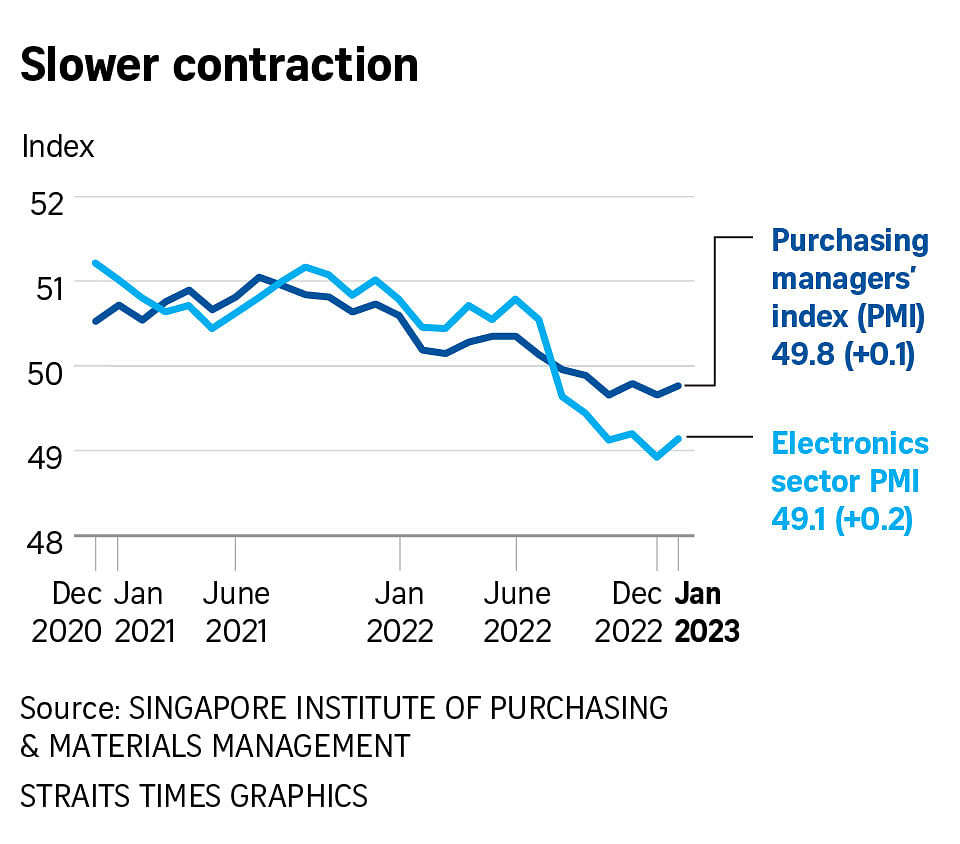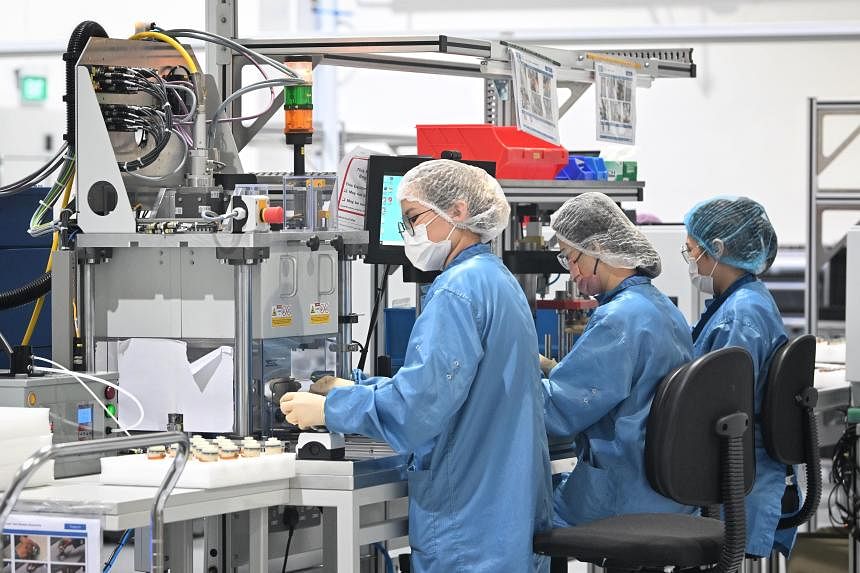SINGAPORE - Manufacturing activity in Singapore edged up in January, but it was still a fifth month of continuous contraction.
The purchasing managers’ index (PMI) – a key indicator of trends in the sector – came in at 49.8 in January, up 0.1 point from December.
This was attributed to a slower contraction in the key indexes of new orders, new exports, factory output and inventory.
A reading over 50 indicates expansion; one below that points to contraction.
The Singapore Institute of Purchasing and Materials Management – the industry body that issues the PMI – said anecdotal evidence suggests that Singapore companies have been quite resilient in their supply chains thus far, but ongoing geopolitical developments could worsen the situation.
Similarly, the electronics sector PMI remained in contraction territory but enjoyed a slightly better uptick of a 0.2 point rise to 49.1 in January, compared with 48.9 in December 2022. This was nonetheless the sixth consecutive contraction since August 2022.
UOB senior economist Alvin Liew said the small uptick in January for overall and electronics PMIs came as a surprise, but did not change UOB’s negative view for manufacturing in 2023.
“Most of the sub-indices within the PMI surveys remain in contraction territory, and we have also kept our view of weaker external demand and the electronics downcycle remaining in place, which are typically a bad combination for economies with a significant share of manufacturing related to electronics, such as Singapore, South Korea and Taiwan,” Mr Liew said.
“We expect the PMIs for Singapore to stay in contraction territory in the first three months of 2023 and the weakness to extend at least another quarter (or even two).”
Overall, the small improvement in January is insufficient to change the negative manufacturing outlook for 2023, he added.
“We maintain our Singapore 2023 manufacturing forecast to contract by 5.4 per cent due to the faltering outlook for electronics and weaker external demand.
“Our 2023 outlook is largely premised on broad moderation in demand from key external economies this year, and we project the US and European economies (which are key end-markets for Singapore) to enter a recession this year amidst a monetary policy-tightening stance among these advanced economies,” Mr Liew said.
“This will directly impact the manufacturing and external-oriented services sectors, which will be reflected by the weakness in Singapore’s headline and electronics PMIs.”

OCBC Bank chief economist Selena Ling also expected both manufacturing and electronics PMIs to stay subdued in the first quarter of 2023.
Singapore’s PMIs are largely in line with regional PMIs, which showed a modest improvement in January 2023, compared with December 2022.
“The business expectations survey is already very bearish, with a net minus 25 per cent. The saving grace is that the electronics industry may have hit bottom in the near term, even if there is no quick turnaround story, mainly because the US-China chip war is still ongoing,” Ms Ling said.


